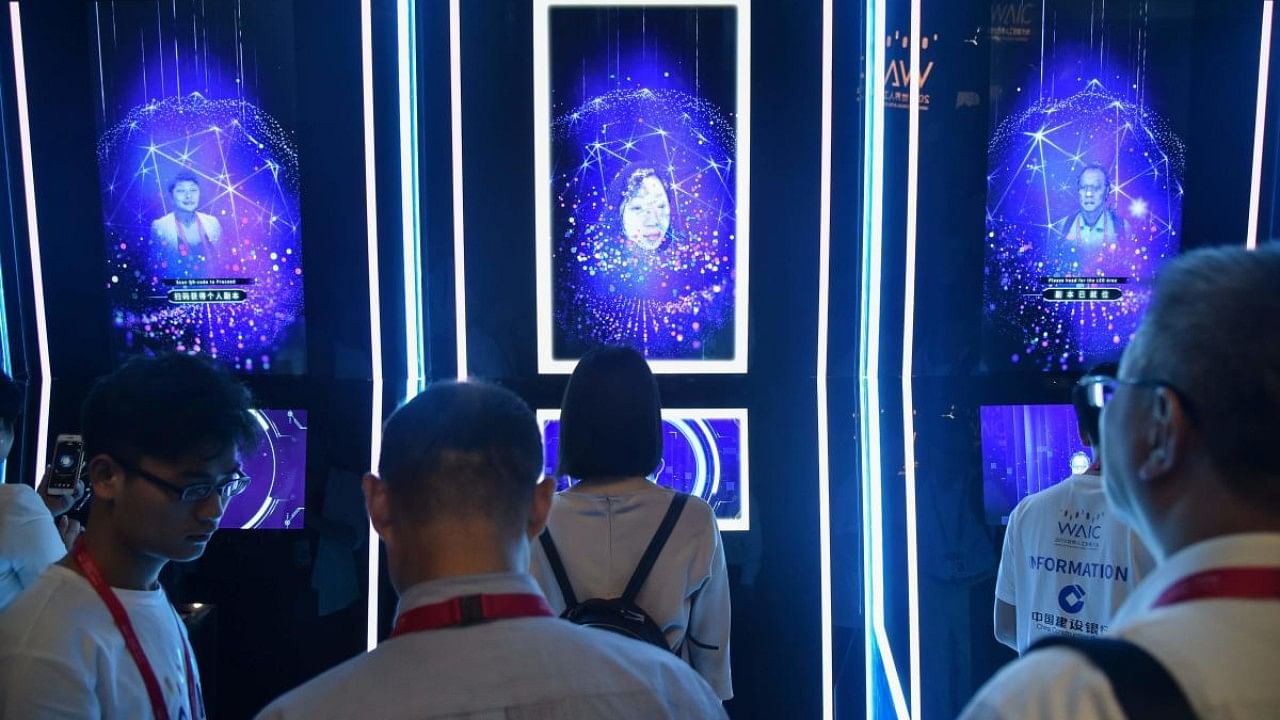
By Tim Culpan
The opening scene of a brief online documentary by Chinese state-run media channel CGTN shows jaywalkers in Shenzhen getting captured on video, identified, and then shamed publicly in real-time. The report is supposed to highlight the country’s prowess in artificial intelligence, yet it reveals a lesser-known truth: China’s AI isn’t so much a tool of world domination as a narrowly deployed means of domestic control.
On paper, the US and China appear neck and neck in artificial intelligence. China leads in the share of journal citations — helped by the fact that it also publishes more — while the US is far ahead in the more qualitative metric of cited conference papers, according to a recent report compiled by Stanford University. So while the world’s most populous country is an AI superpower, investors and China watchers shouldn’t put too much stock in the notion that its position is unassailable or that the US is weaker. By miscalculating the others’ abilities, both superpowers risk overestimating their adversary’s strengths and overcompensating in a way that could lead to a Cold War-style AI arms race.
In fact, China’s expertise is somewhat limited in scope. Artificial intelligence encompasses many sub-fields, including machine learning, robotics, natural language processing, and computer vision. The US has a broad toolkit that’s deployed across each of these disciplines and used around the world. China, by contrast, excels mostly in computer vision, an area that helps Beijing build out its surveillance state.
In technical assessments conducted by the US’s National Institute of Standards and Technology, Chinese algorithms consistently rate near the top across a series of tests that are akin to surveillance conditions — mugshots, visa photos, and border-control images. Beijing-based SenseTime Group Ltd. is a standout. CloudWalk Technology Co., founded in 2010 by the Chinese Academy of Sciences, and a team from Beihang University also ranked high in recent examinations of more than 600 entries from around the world.
More than half the papers last year published by Chinese teams were in the disciplines most used in surveillance — computer vision and pattern recognition, according to data on research papers compiled by Microsoft Academic Graph and analysed by the Chinese media outlet Sixth Tone. Compared with the US, UK, Germany, and India, a smaller proportion of its papers are on machine learning, natural language processing, and robotics.
Revenue for AI computer-vision companies in China, meanwhile, is largely linked to governments and their desire to monitor people. SenseTime, which is planning a Hong Kong public offering, got almost half its revenue in the first six months of the year from its “Smart City” business. Rival Megvii Technology Ltd., which swapped its earlier listing plans in the city for an upcoming Shanghai debut, relies even more heavily on local government contracts, with 64 per cent of its business coming from a similar product suite it calls “City IoT Solutions.” These projects are largely based on setting up cameras and sensors around a city to track people and vehicles, then using AI software to keep tabs on their movement.
AI technology in the US has many more applications. The country leads in machine learning, a branch of AI that leverages data and algorithms to learn and improve accuracy. Most of the world’s leading and widely adopted frameworks were developed in America by companies such as Alphabet Inc.’s Google, Microsoft Corp., and Facebook Inc., as well as the University of California, Berkeley. The best natural language processing engines, used to understand, process, and analyse written text, also hail from US tech giants — Microsoft, Google, Amazon.com Inc., and International Business Machines Corp.
These tools are used globally for voice recognition in smart speakers, to run chatbots in customer service, improve translation and search results, or detect fraud in the financial industry. US companies are also leaders in enterprise deployments, where the recent surge in work-from-home usage has driven demand for cloud computing and networking technologies. And it’s a world-beater in process automation, which is used to replace staff in call centers and customer service.
While these technologies can, and are, used in surveillance by Western powers their true power lies in their commercial viability. America asserts its dominance by creating products that help clients around the world become more profitable or efficient. By contrast, SenseTime and Megvii continue to lose money.
The Covid-19 outbreak, which has upended supply chains and business models, might be the push China needs to become the AI superpower it hopes to be. Startups like Aubo Robotics Technology Co., which makes industrial arms, and UBTech Robotics Inc., a developer of humanoid robots, could become as important to Beijing’s national goals as facial recognition leaders SenseTime and Megvii. A shortage of factory and service workers has spurred a massive change in how the nation views artificial intelligence, notes Lee Kai-Fu, Chairman of VC firm Sinovation Ventures and co-author of “AI 2041: Ten Visions for Our Future.”
“The pandemic has really in China pushed further the adoption of automation and robotics,” Lee told Bloomberg’s Businessweek Talks podcast last month. “The robotic revolution is probably the big step forward that will be helpful to push China’s technologies ahead.”
To take its position as the undisputed leader in AI, China will need to spend less effort finding ways to track people and more on technologies to replace them.
Check out the latest videos from DH: